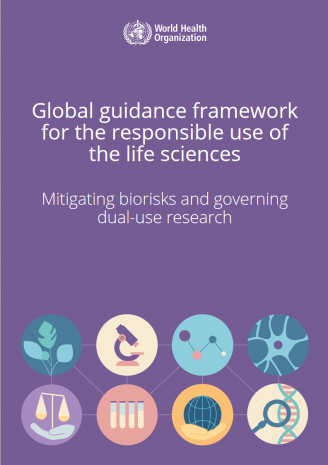Foreword
Life sciences and technologies can offer endless opportunities to improve our health, our societies and our environment. However, developments and advances in life sciences and associated technologies may pose risks that include safety and security risks caused by accidents, inadvertent and deliberate misuse to cause harm. For example, advances in synthetic biology can have beneficial applications in medicine, energy, and environmental
remediation but can also raise safety and security concerns by enhancing the pathogenic characteristics of ordinary organisms, creating new pathogens from synthetic DNA or reconstructing extinct pathogens. Development in neurosciences can help preventing and treating neurological disorders such as Parkinson’s disease and Alzheimer’s disease, but new knowledge and applications can also create new risks, including those of manipulating the way we think, move or behave. These risks arising from developments in the life sciences and converging technologies need to be recognized and mitigated. This is the objective of this framework. The values, principles, tools and mechanisms described in this framework aim to support Member States and stakeholders to prevent and mitigate biorisks and govern dual-use research.
WHO plays a critical role in harnessing the power of science and innovation and provides global leadership to support Member States in translating the
latest in science, evidence, innovation and digital solutions to improve health and health equity for all. Ensuring that WHO anticipates and stays on top of the latest scientific developments and identifies opportunities to improve global health also demand frameworks and practical tools to mitigate risks, especially when developments in life science and technologies could be harmful to our people, animals, plants and environments. This framework aims to raise awareness about the importance of biorisk management in the context of the One Health approach. It identifies some of the challenges and gaps associated with mitigating biorisks and governing dual-use research and highlights how Member States and other stakeholders can effectively start biorisk management. The framework sets out a practical step approach for implementing the framework and offers checklists for various stakeholders, scenarios and case studies on the governance of biorisks and dual-use research.
This document is intended to be a starting point for the development and strengthening of biorisk management. It provides a global perspective on the
tools and mechanisms for biorisk management and will need to be adapted and contextualized to reflect Member States and stakeholders’ needs and
perspectives. Preventing and mitigating these risks is a shared responsibility and involves many stakeholders with different capacities. Fostering a collaborative environment across sectors, disciplines and actors at different levels (individual, institutional, national, regional and global levels) that will
support and strengthen countries and stakeholders’ capacities to anticipate and mitigate these risks is essential to promote trust and to proactively
address challenges to global public health. Being able to prevent and mitigate risks while bringing the best of science to health will contribute to leverage the endless opportunities that the life sciences can offer to improve our health and keeping our world safe.
Dr Soumya Swaminathan
Chief Scientist
World Health Organization

